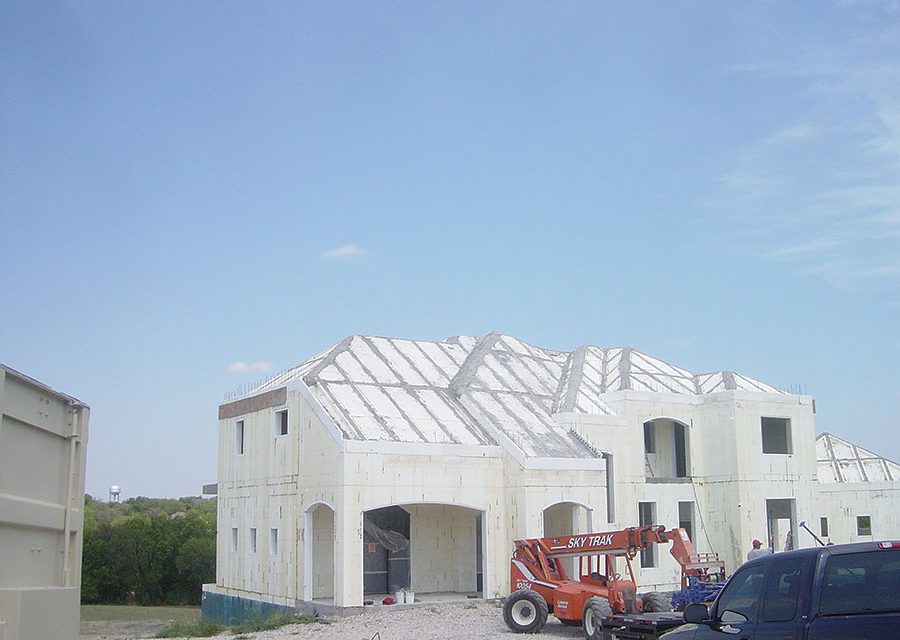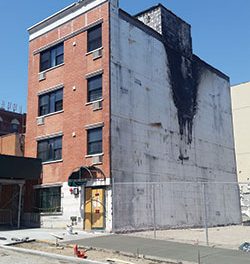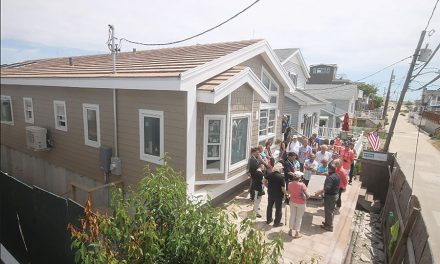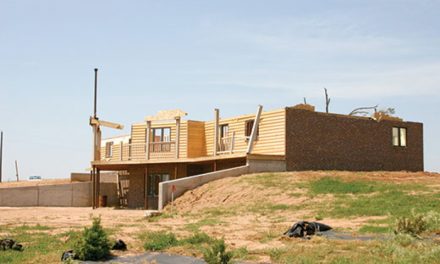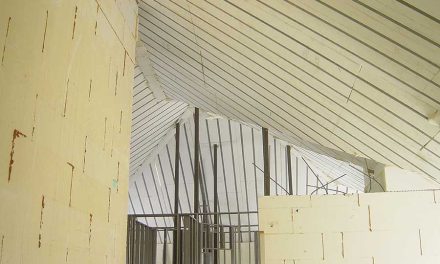The January 2014 issue of this magazine reported that the concrete industry has been largely absent from discussions on how to build more hurricane-resistant structures. That situation changed this year when three leading ICF experts were selected to present a three-hour class at the 2014 National Hurricane Conference.
The conference, held in mid-April in Orlando, Fla, usually attracts 2,000 attendees from around the country and covers all major aspects of hurricane preparedness, response and recovery. Prominent attendees included the directors of the National Hurricane Center, Rick Knabb, and the Federal Emergency Management Agency, Craig Fugate.
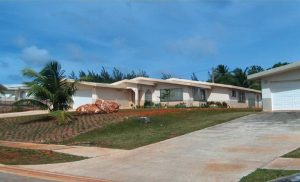
Disaster-resistant concrete housing in Guam, such as this residence, has proved that the concrete-box frame design can stand up to winds in excess of 200 mph.
The presenters at the conference were Douglas Bennion, manager of the training and technical services department at Quad-Lock Building Systems; C.E. Joseph Warnes, a structural engineer specializing in disaster-resistant concrete dwellings, and Kenneth Luttrell, a licensed structural engineer who has chaired building code committees seeking to improve buildings’ wind and seismic resistance.
Warnes reports that while they were “a bit disappointed that there were not more people in the audience,” many of those in attendance were extremely influential, including representatives of the insurance industry, FEMA, and nationally syndicated journalists. Harold Bubil, of the Sarasota Herald-Tribune wrote four stories about the ICF presentation, some of which were picked up nationally. And after the seminar Luttrell met privately with the chief of FEMA’s Building Science Branch, Edward Laatsch, and several of their engineers.
Warnes says, “Long-term results are obviously unknown but there are already encouraging signs.”
The engineering seminar was titled, “Super Hurricanes and Tornadic Wind Velocities: Structural and Architectural Design and Construction Details for Single Family Houses. ”
Guam Proves the Case
Warnes was the lead presenter, and began the seminar by summarizing the major causes of natural disasters in the U.S.—wildfires, earthquakes, hurricanes, and tornadoes—and identified the latter two as the most common and most destructive: category 4 and 5 hurricanes and category EF 3, 4, and 5 tornadoes. Perhaps most alarming, he said, is that while the International Residential Code for One- and Two-Family Dwellings (IRC) makes provisions to resist other types of disasters, the residential code is silent on tornadoes.
“The IRC includes provisions in significant detail for hazards… such as seismic, floods, hurricanes and insects,” he says. “The subject of tornado-force winds is not acknowledged — not a word… The millions of people who live in tornado country may even be outraged to learn about the fact that their houses will not likely survive a big one. Every existing homeowner in tornado country should be considering a FEMA-type shelter.”
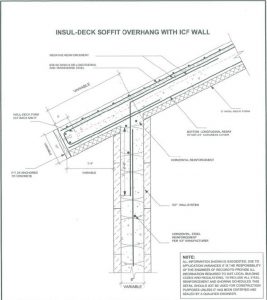
The key to withstanding big wind events is to include a concrete roof that has been properly tied into the walls.
After going over damage caused by tornadoes of increasing strength, he stated, “For the first time, we today have a solution to the age-old challenge of building attractive, energy-conservative houses that are comfortable and at the same time secure from destruction by the severest forces of nature.”
The solution, he said is the Disaster-Resistant Shell (DRS), a concrete box-frame design in which the roof, floor and walls are tied together. This concept was pioneered on the island of Guam, with thousands being built since the mid 1960s. Warnes pointed out that this region of the world has a record of some of the most severe earthquakes and most intense windstorms, and despite at least five typhoons with winds in excess of 175 mph, none of the homes have ever had wind damage. Even a 1993 earthquake that measured 8.1 on the Richter scale failed to cause measurable harm.
He emphasized the point that the roof absolutely must be a reinforced concrete structural diaphragm and that wood-framed roofs simply cannot survive a “big wind”. Wood-framed roofs on ICF walls “will be decapitated” in big winds, he says.
Warnes finished his portion of the presentation by going over some of the reasons concrete homes have not become more popular in the past (poor aesthetics, high price, lack of insulation, difficulty decorating, etc.) and made the point that with ICFs, these obstacles have been overcome.
Running the Numbers
Luttrell, who is licensed as both a professional engineer and structural engineer, then explained the engineering and construction details of how such a structure could be built, and the forces it could withstand.
He began by running calculations on the wall and roof loads created by a hypothetical tornado with winds of 350 mph, in accordance with ASCE 7-10 and ACI 318-11. Forces ranged from 150 pounds per sq. ft. to -120 psf.
Then, he demonstrated that an ICF wall with a four-inch core could easily withstand loads of 177 psf, even with window penetrations, with surprisingly little reinforcing steel. (In this case #3 rebar horizontal and #5 vertical on 12″ centers).
At 200 mph, forces fell to around 60 psf; at 135 mph, forces were 25-28 psf.
The conclusion, he said, was that all-concrete houses can resist the strongest tornado winds, and that ICF systems are a cost-effective option to create this type of structure. He added that wood-framed roofs were problematic, even for EF-3 tornadoes, and recommended wood-roof-to-wall connections should be strengthened in the IRC.
“There is a belief that it is too costly and takes too much time to build a house to resist tornadoes and earthquakes,” said Luttrell. “This is not the case.”
A Realistic Path Forward
Bennion, the ICF expert, was the final presenter. He began by reviewing how culturally, we focus on unlikely disasters, and value “glittering amenities” over structures with “strong bones.”
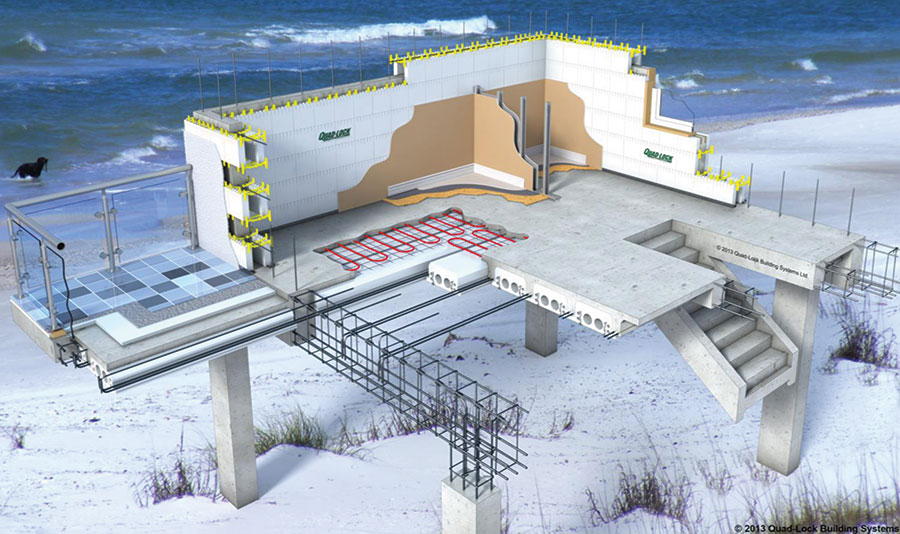
Elevated slabs place a building’s living area above the danger of storm surge, and can be created cost-effectively with EPS decking. These slabs are strong enough to support hurricane-resistant ICF walls, as well.
He then went through what ICFs are (both panel and block systems as well as the various decking systems) and how they are used to construct buildings. He then presented data from the Portland Cement Association (PCA) showing how ICF walls—even screen and waffle-grid systems—are up to 3,000% stronger than their wood-framed counterparts.
With that background in place, he explained how ICFs could be used to improve disaster resistance. The first case study was building a 10’x10′ safe room, a relatively simple and inexpensive option. Then he moved onto whole-house hurricane shelters, built with ICF walls and sloped concrete roofs. He finished by focusing on elevated slab construction, which is considered the best solution to deal with storm surge.
Using construction details and references to the relevant code standards, he made the case that EPS decking systems are the most cost-effective and environmentally conscious method to construct such slabs, as they use less concrete, less labor, and fewer supports to achieve the same strength.
He concluded his presentation with four case studies—two homes, a high school and a library/community hurricane shelter—that had been recently built in high-risk hurricane areas. All had used ICF and EPS decking to achieve a level of disaster-resistance far higher than required by code.
The way forward, Bennion concluded, is to create prescriptive disaster-resistant design standards and adopt them into code as a voluntary compliance pathway. “Watch consumers make the choice,” he says.
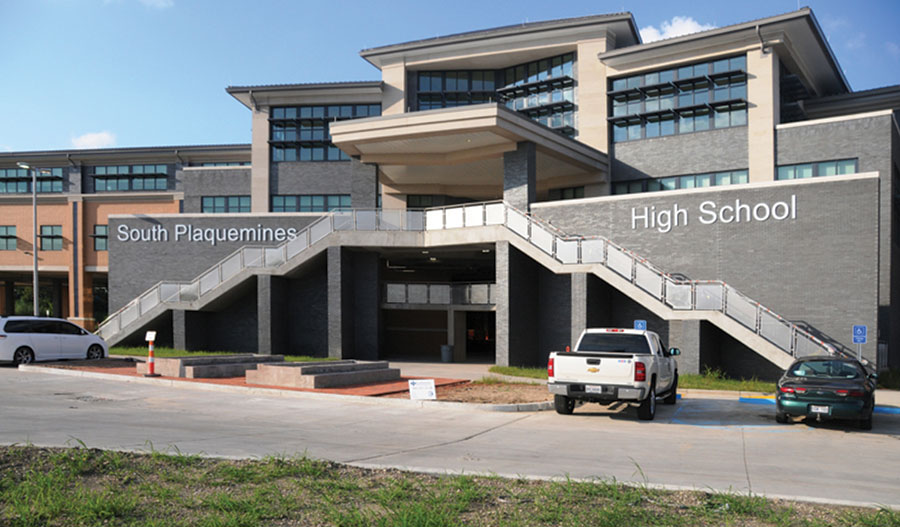
South Plaquemines High School, on the Louisiana Gulf Coast, is an elevated slab design using the “voided box” technique. Bennion used this project as one of his examples of a real-world case of ICFs being used to create hurricane-resistant buildings.

